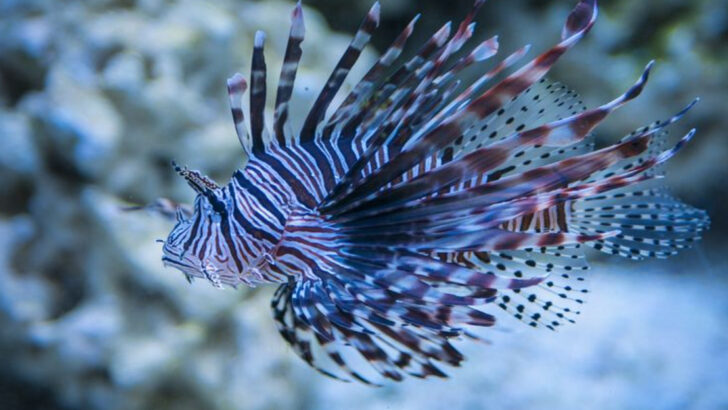America’s waters are teeming with creatures so bizarre, they seem straight out of a sci-fi movie. Some have transparent heads, others sport electric blue markings, and a few even inflate like balloons when startled.
From the deep lakes of the Midwest to the salty shores of the Gulf, strange and spectacular fish lurk beneath the surface. Some glow in the dark, some use their fins like hands, and a handful look like they swam straight out of prehistoric times.
But weird doesn’t mean unlovable. These fish are nature’s oddballs, proof that evolution has a wild sense of humor. Whether they’re masters of disguise or champions of the strange, each one has a story worth telling.
Get ready to dive into a world of underwater wonders—here are 18 of the weirdest and most wonderful fish found across America!
Alligator Gar
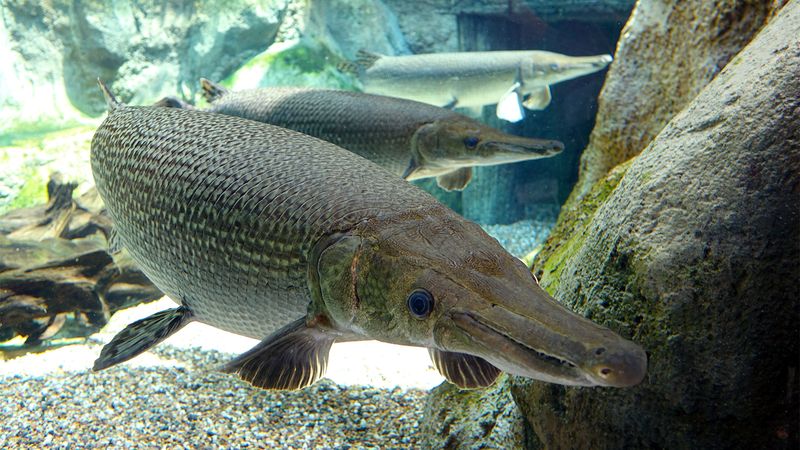
The Alligator Gar is a fascinating blend of fish and reptile characteristics. With its long, tooth-filled snout resembling that of an alligator, this fish is a top predator in southern swamps and slow-moving rivers.
Despite its fearsome appearance, the Alligator Gar is known for its gentle nature towards humans. Its scales are tough and armor-like, making it a survivor in its habitat.
Alligator Gars are sought by anglers for sport, but they also play a crucial role in maintaining the balance of their ecosystems. They are truly one-of-a-kind.
Paddlefish
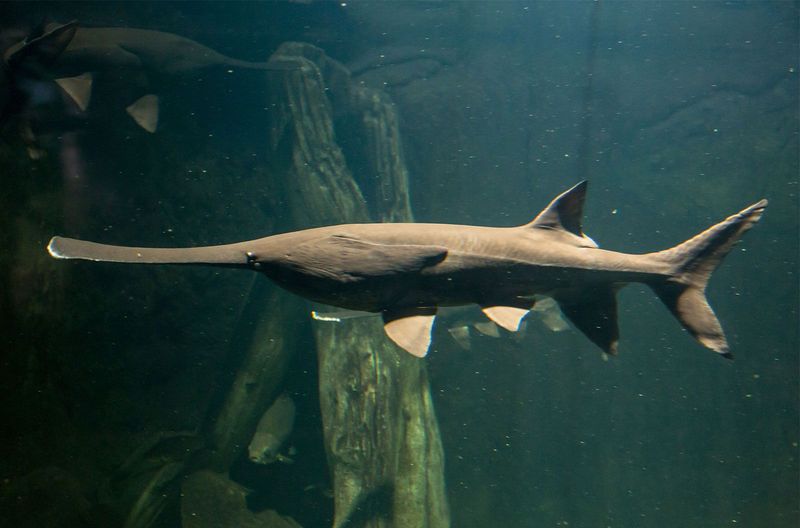
Paddlefish are remarkable for their long, paddle-like snouts, which they use to sense food in murky waters. These prehistoric fish date back millions of years and can be found in the Mississippi River basin.
Their unique appearance is not just for show; the elongated snout is a sophisticated sensory organ. Paddlefish glide effortlessly through the water, filtering plankton for nourishment.
Conservation efforts are vital for their survival as they face threats from habitat loss and overfishing. Paddlefish continue to intrigue scientists and fishing enthusiasts alike.
Flying Fish
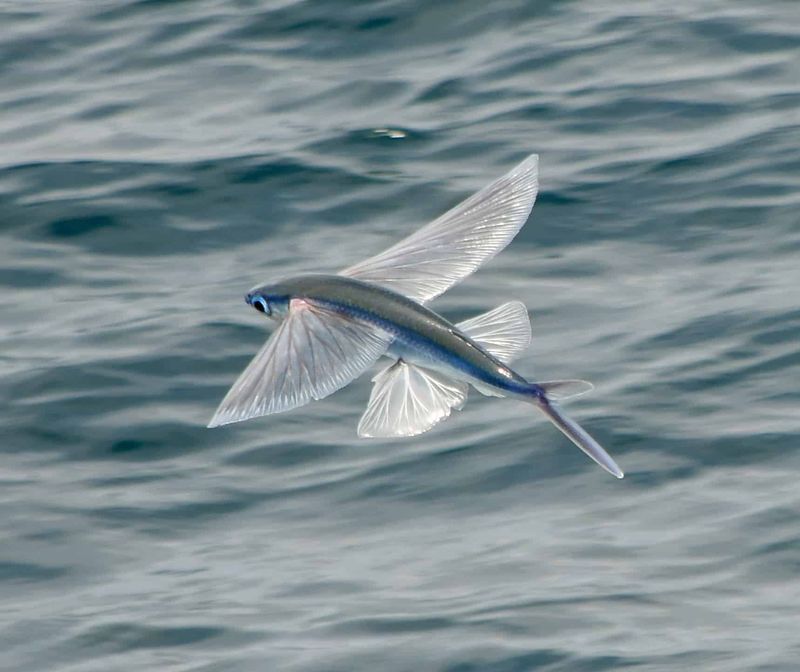
Flying Fish are famous for their gliding abilities, using their long pectoral fins to “fly” above the water’s surface. They are commonly found in warm ocean waters along America’s coasts.
This remarkable behavior helps them escape predators, soaring for hundreds of feet at a time. Observing a school of Flying Fish in action is a mesmerizing sight.
Their aerodynamic bodies and shimmering scales add to their charm. While not usually targeted by anglers, Flying Fish are an integral part of the oceanic food web, captivating all who encounter them.
Lionfish
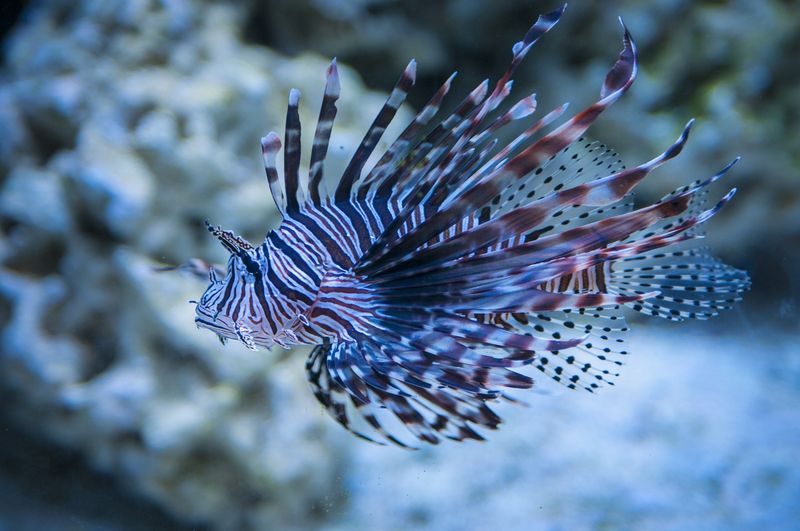
The Lionfish is a breathtaking yet dangerous beauty of the Atlantic. With its striking coloration and venomous spines, it commands attention wherever it swims.
Originally from the Indo-Pacific, Lionfish have become invasive in Atlantic waters, posing a threat to native species. Despite their impact, they are admired for their grace and elegance.
Lionfish are a popular subject for underwater photographers and divers. Control measures are essential to curb their population and protect the delicate balance of marine ecosystems. Each sighting is both a delight and a reminder of nature’s complexity.
Stonefish
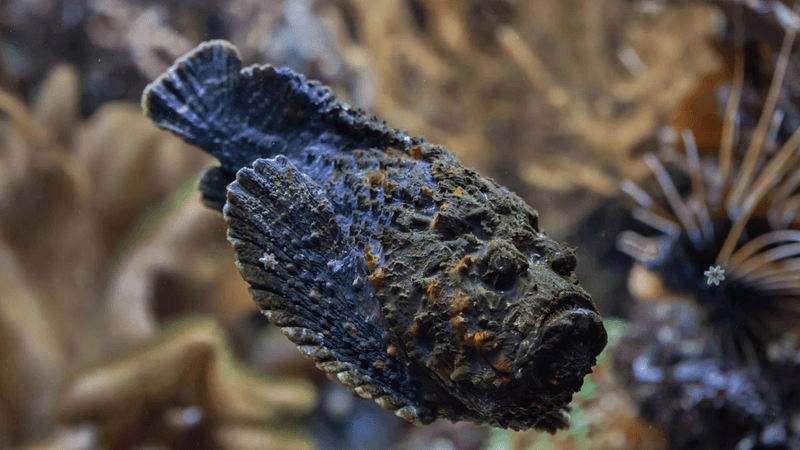
Considered one of the most venomous fish globally, the Stonefish’s appearance is its greatest weapon. Its bumpy, rock-like texture allows it to blend seamlessly with its surroundings.
Found along the Pacific coast, this fish remains motionless, waiting for unsuspecting prey to pass by. The Stonefish’s venom can be lethal, making it a creature to admire from a safe distance.
Despite its dangerous reputation, it plays a role in the marine food chain. Divers should be cautious, as these masters of disguise are often hidden in plain sight.
Blobfish
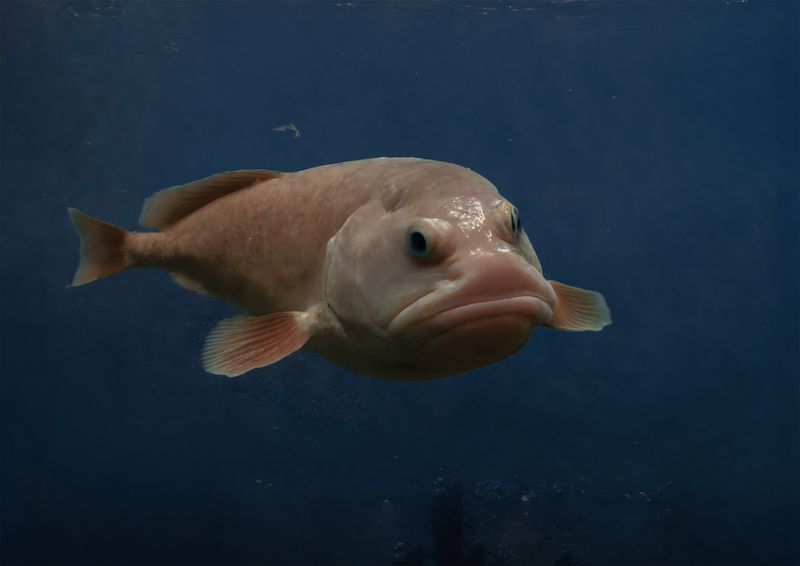
The Blobfish has gained fame as one of the “ugliest” fish due to its gelatinous, blobby appearance. Found in the deep waters off California, this fish is adapted to high-pressure environments.
Its unique look is a result of living in depths where traditional fish structures would collapse. When brought to the surface, the Blobfish appears saggy and droopy.
Despite its unflattering nickname, this fish is perfectly suited to its habitat. It remains a symbol of the ocean’s mysterious depths and the creatures that call it home.
Gulf Sturgeon
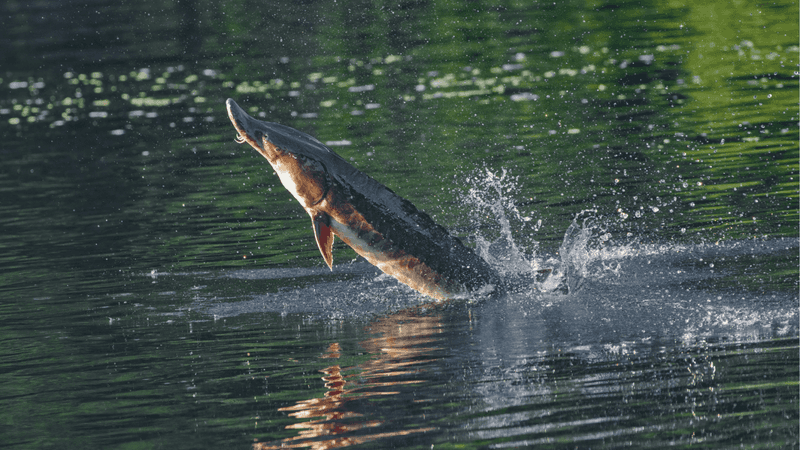
The Gulf Sturgeon is a living relic of the past, with its bony plates and elongated snout. These fish inhabit the Gulf of Mexico and are known for their impressive size and strength.
During migration, they are often seen leaping out of the water, a spectacle for onlookers. Conservation efforts are crucial, as their populations have declined due to overfishing and habitat loss.
Gulf Sturgeons are filter feeders, contributing to the health of their ecosystem. Their ancient lineage and unique characteristics continue to fascinate biologists and conservationists.
Ocean Sunfish
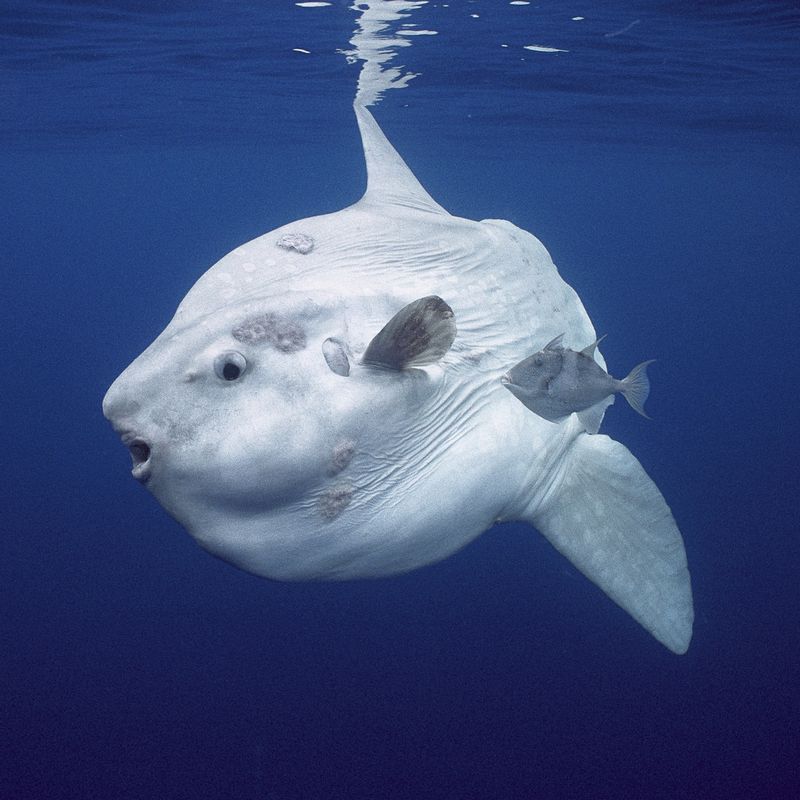
The Ocean Sunfish, or Mola Mola, holds the title for the world’s heaviest bony fish. These gentle giants are often seen basking near the surface, seemingly relaxing in the sun’s warmth.
Their rounded bodies and tiny fins make them unique in appearance. While not strong swimmers, they travel vast distances in search of jellyfish, their primary food.
Despite their size, Sunfish pose no threat to humans and are a favorite among divers and marine enthusiasts. Each sighting is a rare treat, emphasizing the diversity of ocean life.
Electric Eel
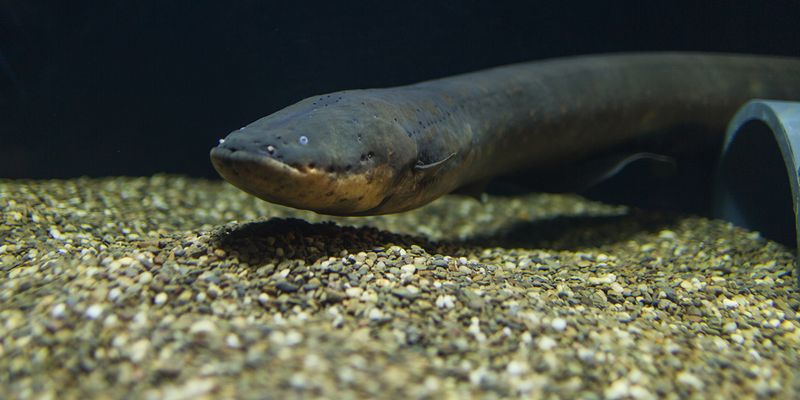
Although named an eel, the Electric Eel is more closely related to catfish. Found in the murky waters of the Amazon, it possesses the ability to generate powerful electric shocks.
This unique adaptation serves both for hunting prey and defending against potential threats. The Electric Eel’s slender body allows it to maneuver easily through freshwater environments.
While captivating, a safe distance is recommended, as its electric charge can be dangerous. These remarkable creatures showcase nature’s ingenuity and the diverse survival strategies of aquatic life.
Wolf Fish
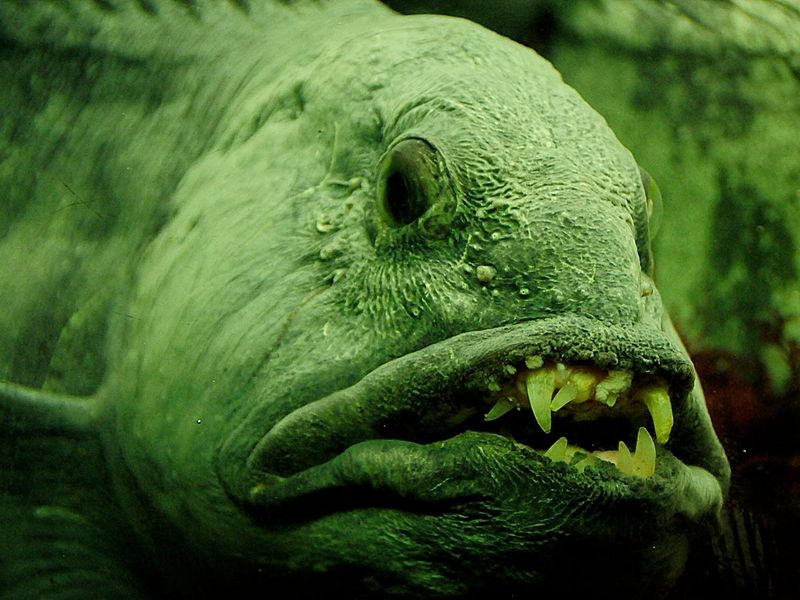
Named for its fearsome dentition, the Wolf Fish is a formidable predator found along the Atlantic coast. Its large teeth are perfect for crushing shellfish and hard-bodied prey.
With a robust body and powerful jaws, the Wolf Fish is well-adapted to its environment. While it may appear intimidating, it is not aggressive towards humans.
These fish play a vital role in controlling the populations of sea urchins and other invertebrates. Observing a Wolf Fish in its natural habitat is a testament to nature’s raw power and beauty.
Sea Dragon
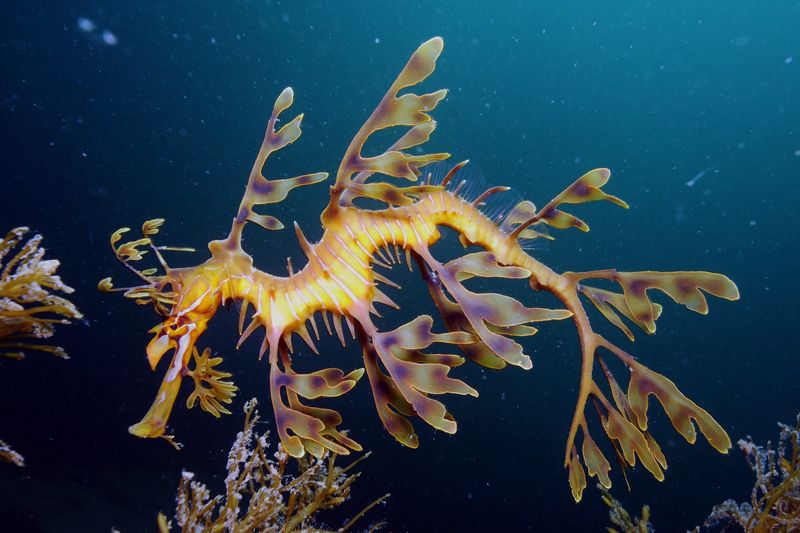
Sea Dragons are renowned for their leaf-like appendages that provide superb camouflage among seaweed and coral. These delicate creatures inhabit the waters of southern Australia.
Their graceful movements and vibrant colors make them a favorite among divers and photographers. Despite their fragile appearance, Sea Dragons are resilient and adaptive.
They represent the extraordinary creativity of nature, thriving in their niche environment. Conservation efforts help protect these mesmerizing fish from threats like pollution and habitat destruction, ensuring future generations can enjoy their beauty.
Banded Archerfish
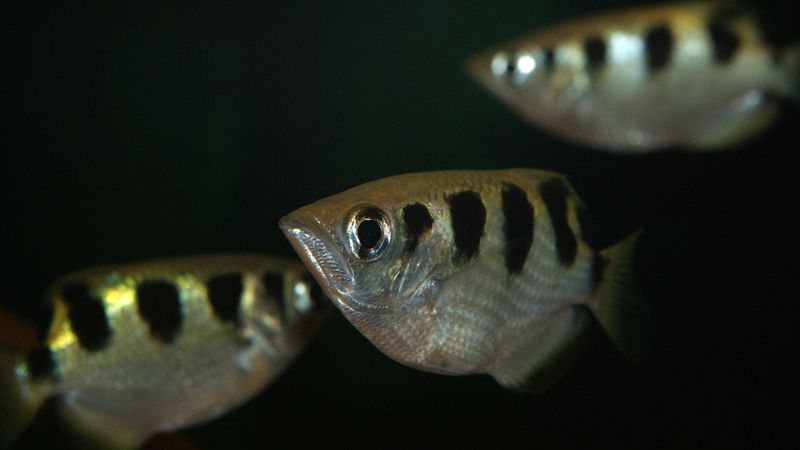
The Banded Archerfish showcases a unique hunting method, shooting jets of water to knock insects into the water. Found in the brackish and freshwater habitats of Southeast Asia, these fish are skilled marksmen.
Their keen eyesight and precision make them successful hunters, fascinating to observe. Despite their small size, Archerfish are bold and innovative in their approach to capturing prey.
This remarkable adaptation highlights the diverse strategies fish employ to survive. Watching an Archerfish in action is a reminder of the intricate relationships between aquatic and terrestrial ecosystems.
Viperfish
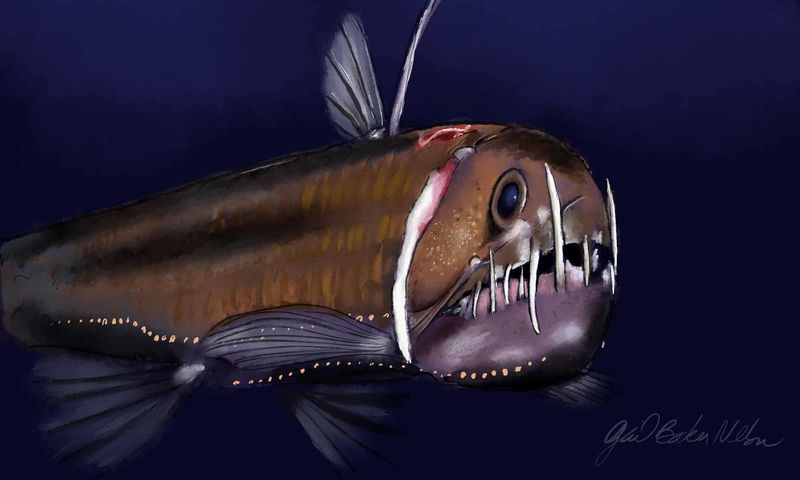
The Viperfish is a fearsome predator of the deep sea, known for its long, needle-like teeth and bioluminescent lure. This adaptation helps attract prey in the dark abyssal depths.
Its large mouth and expandable stomach allow it to consume prey nearly as large as itself. Viperfish are a testament to the extreme adaptations necessary for survival in the deep ocean.
While rarely encountered by humans, they capture the imagination of scientists and oceanographers. The Viperfish exemplifies the mysteries and marvels of life in Earth’s final frontier.
Atlantic Bluefin Tuna
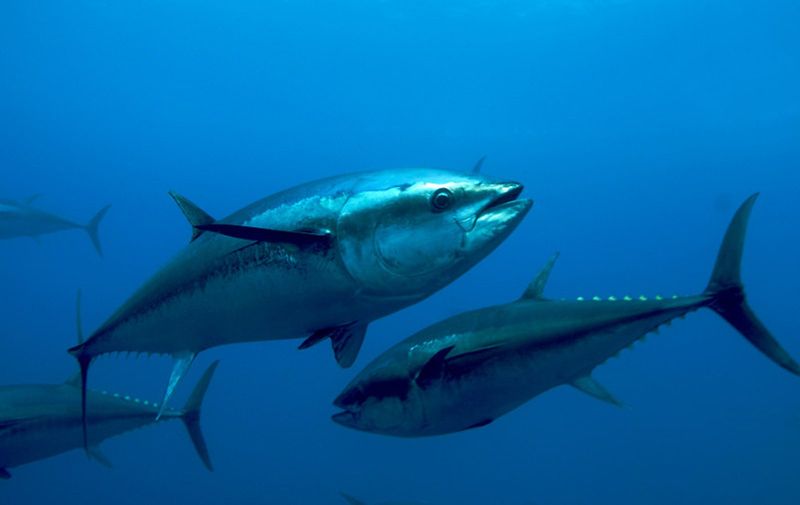
The Atlantic Bluefin Tuna is a marvel of speed and strength, navigating the open ocean with grace. Its metallic blue coloration and streamlined body make it a formidable hunter.
Bluefin Tunas are highly prized for their meat, leading to overfishing and conservation concerns. Their migratory patterns span vast distances, showcasing their endurance and adaptability.
Efforts to protect these ocean giants are crucial, as they play a significant role in the marine ecosystem. Observing a Bluefin Tuna in action is an awe-inspiring experience, highlighting the ocean’s dynamic life.
Green Sunfish

The Green Sunfish is a vibrant freshwater species, known for its striking coloration and adaptability. Found in lakes and rivers across North America, it thrives in diverse environments.
With a diet consisting of insects and small fish, the Green Sunfish is an active and opportunistic feeder. Its presence indicates a healthy aquatic ecosystem.
Anglers appreciate its spirited fight, adding excitement to fishing adventures. The Green Sunfish’s beauty and resilience make it a cherished resident of America’s freshwater habitats, appreciated by both nature lovers and recreational fishers.
Striped Bass
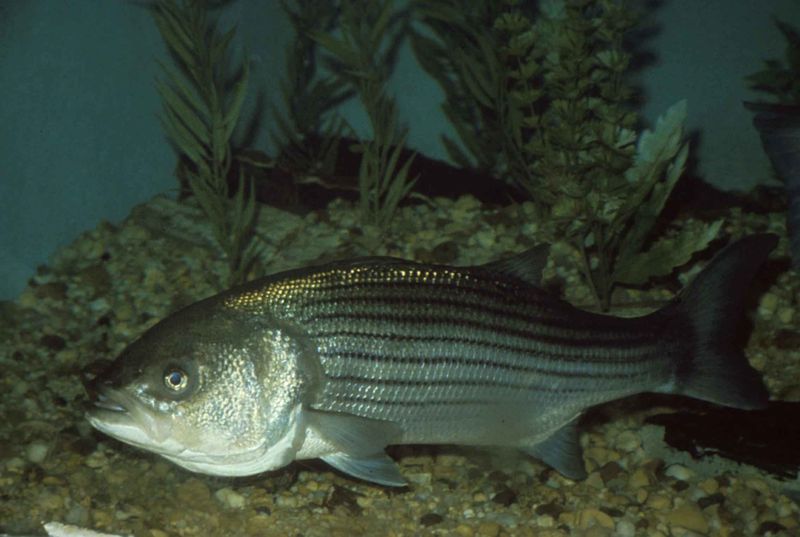
The Striped Bass is a popular game fish along the Atlantic coast, known for its distinctive stripes and powerful leaps. Anglers admire its fighting spirit and the challenge it presents.
Striped Bass migrate between freshwater and saltwater, showcasing versatility and resilience. This adaptability makes them a key species in various ecosystems.
Efforts to manage and preserve Striped Bass populations ensure sustainable fishing and ecological balance. Observing them in action is thrilling, epitomizing the untamed energy of coastal waters. Their presence enriches the fishing experience and ecological health of American shores.
American Eel
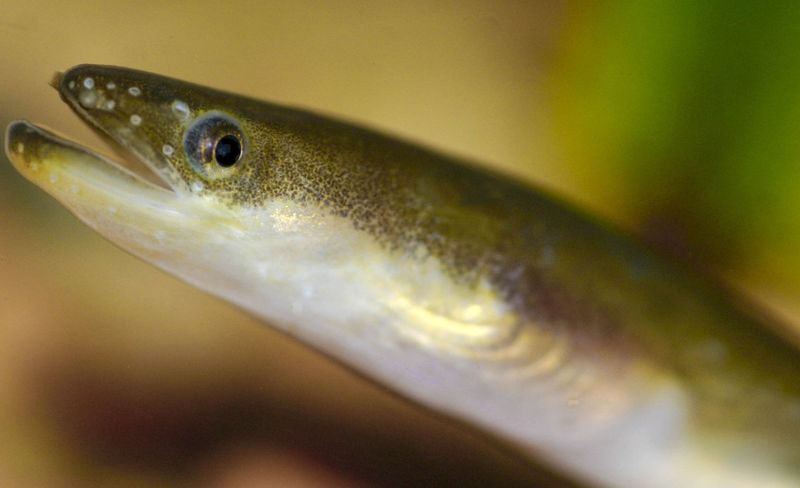
The American Eel’s fascinating lifecycle involves migration from freshwater streams to the Sargasso Sea for breeding. This journey is one of nature’s great migrations.
Eels are adept at navigating diverse environments, earning them a unique place in American folklore. Their snake-like bodies allow them to slip through tight spaces with ease.
Despite their elusive nature, American Eels are vital to aquatic ecosystems, contributing to nutrient cycling. Conservation efforts aim to protect their habitats and ensure the continuity of their mysterious journeys, enriching the biodiversity of waterways.
Spotted Moray
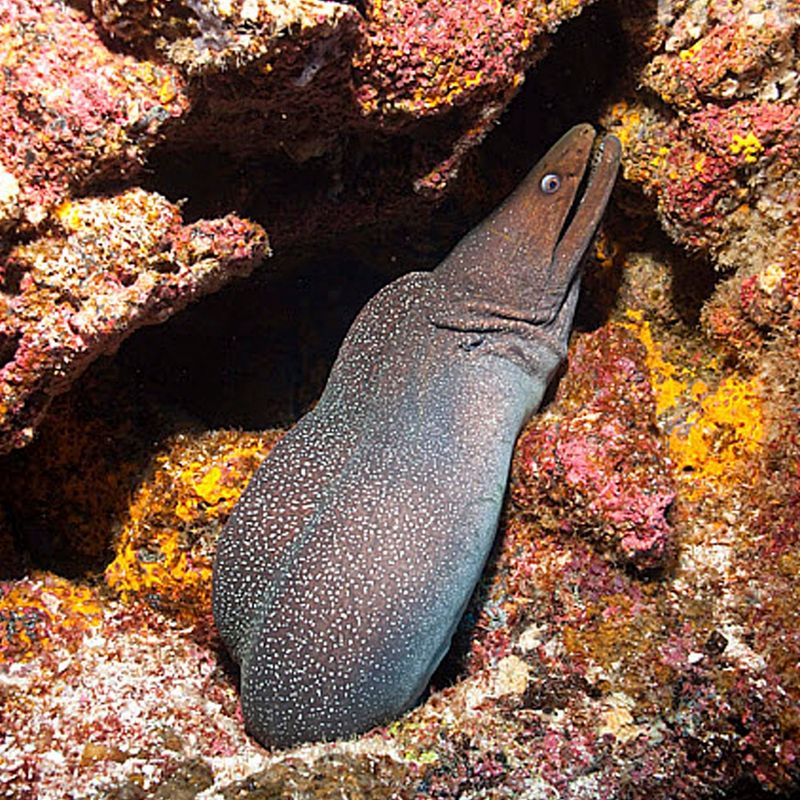
The Spotted Moray is a striking eel inhabiting coral reefs and rocky shorelines of the Atlantic. Its spotted body and sharp teeth are well-suited for hunting in crevices.
While often hidden, Morays are curious creatures, occasionally venturing out to explore their surroundings. Their role in maintaining the health of coral reefs is vital.
Divers lucky enough to spot a Spotted Moray are treated to a glimpse of the reef’s intricate ecosystem. These eels exemplify the balance and diversity within underwater habitats, captivating all who encounter them.

